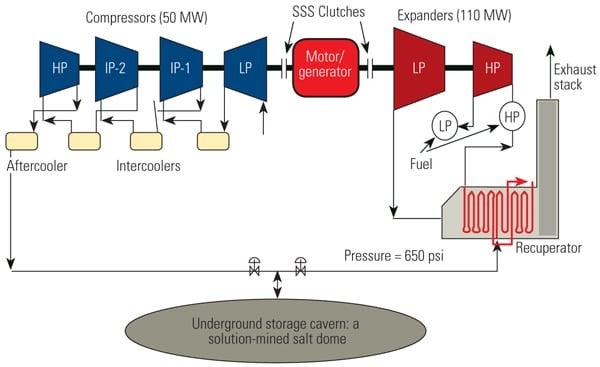Users say they plug in their hybrid EVs, but the data says otherwise – Australian Broadcasting Corporation
Report on Plug-in Hybrid Electric Vehicle (PHEV) Emissions and Their Impact on Sustainable Development Goals
Introduction: PHEVs and the Challenge to Sustainable Development
Plug-in Hybrid Electric Vehicles (PHEVs), which combine a traditional combustion engine with a battery-powered electric motor, have seen a significant increase in sales across Australia. While promoted as a transitional technology supporting sustainable transport, their actual contribution to several key Sustainable Development Goals (SDGs) is under scrutiny. The effectiveness of PHEVs in reducing emissions is entirely dependent on user charging behaviour, creating a significant discrepancy between their potential and real-world performance. This report examines the impact of PHEV usage patterns on Australia’s progress towards:
- SDG 7 (Affordable and Clean Energy): Assessing whether PHEVs genuinely contribute to a cleaner energy mix in transport.
- SDG 11 (Sustainable Cities and Communities): Investigating the role of PHEVs in reducing urban transport emissions and improving air quality.
- SDG 12 (Responsible Consumption and Production): Analysing consumer and corporate behaviour in relation to the intended low-emission use of these vehicles.
- SDG 13 (Climate Action): Quantifying the potential negative impact of suboptimal PHEV usage on national carbon reduction targets.
Real-World Emissions vs. Official Estimates: A Challenge to Climate Action (SDG 13)
The Critical Role of Charging Behaviour
The climate benefit of a PHEV is directly correlated with the frequency of its charging. The vehicle’s design assumes it will be operated primarily in electric vehicle (EV) mode for daily commutes, which is only possible with regular recharging.
- Optimal Use (High Charging Frequency): When charged nightly, a PHEV can operate predominantly on electricity, potentially reducing its emissions to one-fifth of an equivalent petrol vehicle, thereby supporting SDG 13.
- Suboptimal Use (Low Charging Frequency): If charged infrequently, the vehicle functions as a heavier, less efficient combustion-engine car, negating its environmental benefits and undermining climate action efforts.
International Evidence on PHEV Performance
Recent European research, based on mandatory fuel-consumption data from hundreds of thousands of vehicles, provides critical insight. The study found that, on average, PHEVs were driven with empty batteries most of the time. This resulted in real-world CO2 emissions nearly five times higher than official EU estimates, making them almost as polluting as conventional petrol cars. This disparity highlights a major obstacle to achieving the transport decarbonisation targets central to SDG 13.
The Australian Context: A Mixed Picture for Sustainable Transport (SDG 11 & SDG 7)
Conflicting Data on National Charging Habits
Data regarding the charging habits of Australian PHEV owners presents a conflicting narrative, making it difficult to assess their contribution to creating sustainable cities (SDG 11) and promoting clean energy (SDG 7).
- A 2024 survey of private owners, cited by the EV Council, suggested that most users plug in nightly and drive in EV mode for approximately 65% of their travel.
- Data from BYD Australia indicated a 50/50 split between EV mode and hybrid mode based on servicing records.
- Conversely, analysis from the non-profit group Transport and Environment suggests Australian PHEVs may emit even more than their European counterparts due to heavier vehicle models and longer driving distances.
The Corporate Fleet Dilemma: A Barrier to Responsible Consumption (SDG 12)
A significant challenge to the sustainable performance of PHEVs in Australia lies within the corporate sector. Business fleet sales account for approximately half of all new car sales. Studies from Europe and the US, corroborated by Australian fleet management experts, reveal a critical failure in promoting responsible consumption (SDG 12).
- Lack of Incentive: Employees driving company-owned PHEVs often lack the financial incentive to recharge the vehicle, as fuel costs are covered by the employer.
- Observed Behaviour: The Australasian Fleet Management Association reports that fleet managers struggle to ensure employees charge their vehicles, with estimates suggesting only 20% of fleet users plug them in regularly.
- Counterproductive Outcomes: Some fleet managers have reported that switching from conventional cars to PHEVs resulted in an increase in fuel consumption, directly contradicting corporate emissions reduction goals and the principles of SDG 12.
National Emissions Impact and Policy Implications
Modelling the Impact on Australia’s Climate Targets (SDG 13)
Exclusive modelling by Transport Energy/Emission Research (TER) demonstrates how the growing popularity of PHEVs, combined with poor charging habits, could severely compromise Australia’s national climate targets under SDG 13. The research presents two distinct scenarios based on the share of driving in EV mode:
- High-Charging Scenario (80% EV Mode): If users charge regularly, the rise in PHEV sales has a measurable but relatively contained impact on national transport emissions.
- Low-Charging Scenario (20% EV Mode): If charging habits align with European data and Australian fleet reports, the increased sales of PHEVs will add over 100 million tonnes of CO2-equivalent emissions to the atmosphere between 2025 and 2050. This figure is roughly equivalent to the total annual emissions from Australia’s entire road transport sector.
Regulatory Challenges and the New Vehicle Efficiency Standard (NVES)
Current federal policy may be exacerbating the problem. Under the New Vehicle Efficiency Standard (NVES), PHEVs are classified as “low-emission” vehicles based on official test cycles that assume optimal charging behaviour. This classification presents a significant risk to achieving climate and clean energy goals.
- Displacing Zero-Emission Vehicles: The favourable classification of PHEVs may reduce the incentive for suppliers to import and sell fully electric vehicles (BEVs), which have zero tailpipe emissions and offer a more direct path to achieving SDG 7 and SDG 13.
- Perverse Incentives: By generating carbon credits, the sale of PHEVs—which may not deliver their promised emissions reductions in reality—could be used to offset the sale of high-emission vehicles, effectively undermining the standard’s core purpose.
Conclusion: Aligning PHEV Use with Sustainable Development Objectives
The evidence indicates that the contribution of PHEVs to Australia’s Sustainable Development Goals is highly conditional and currently at risk. The environmental benefits are not guaranteed by the technology itself but are contingent on consistent user behaviour that is not being realised, particularly within the significant corporate fleet market. To ensure PHEVs support, rather than hinder, progress towards SDG 7 (Affordable and Clean Energy), SDG 11 (Sustainable Cities and Communities), SDG 12 (Responsible Consumption and Production), and SDG 13 (Climate Action), a re-evaluation of policy, corporate practices, and user incentives is urgently required. Without measures to promote and verify regular charging, PHEVs risk becoming a carbon liability that impedes Australia’s transition to a sustainable transport future.
1. Which SDGs are addressed or connected to the issues highlighted in the article?
The article discusses issues related to vehicle emissions, the transition to cleaner energy in transport, government policies, and consumer behavior, which connect to several Sustainable Development Goals (SDGs). The primary focus is on climate action, but it also touches upon energy, infrastructure, sustainable cities, and responsible consumption.
-
SDG 13: Climate Action
This is the most central SDG to the article. The entire discussion revolves around the carbon emissions of Plug-in Hybrid EVs (PHEVs) and their impact on national efforts to decarbonize the transport sector. The article explicitly quantifies the potential increase in emissions, stating that if PHEV users do not charge regularly, it “adds more than 100 million tonnes of CO2-equivalent for the period 2025–2050.”
-
SDG 7: Affordable and Clean Energy
The article addresses the shift from conventional combustion engines that burn fossil fuels to vehicles that can run on electricity. It discusses the importance of charging vehicles, which relates to energy consumption. It also mentions “a higher uptake of rooftop solar” as a factor influencing charging habits, connecting the issue to the use of clean, renewable energy sources for transport.
-
SDG 9: Industry, Innovation, and Infrastructure
The article focuses on a specific technological innovation in the automotive industry—PHEVs. It discusses the infrastructure required to support these vehicles, such as home and public charging stations. The text notes that Australians have “better access to home charging, due to lower-density housing,” which is a key infrastructure consideration for EV adoption.
-
SDG 11: Sustainable Cities and Communities
The transport sector is a major contributor to the environmental impact of cities. By analyzing the real-world emissions of a growing vehicle segment in Australia, the article directly relates to the goal of making urban environments more sustainable. Reducing transport emissions is crucial for improving air quality and lowering the carbon footprint of cities where “Most PHEVs have enough battery range to handle a standard day’s driving in an Australian city.”
-
SDG 12: Responsible Consumption and Production
The article examines consumption patterns, specifically the purchasing and usage habits of PHEV owners. It highlights a discrepancy between the intended “low-emission” use of these vehicles and the reality, where many users “recharge irregularly.” It also touches on production patterns influenced by government policies like the “New Vehicle Efficiency Standard (NVES),” which classifies PHEVs as low-emission vehicles, potentially encouraging their supply over fully electric alternatives.
2. What specific targets under those SDGs can be identified based on the article’s content?
Based on the article’s discussion of national policies, energy transition, and technological adoption, several specific SDG targets can be identified.
-
Target 13.2: Integrate climate change measures into national policies, strategies and planning.
The article directly discusses national policies aimed at reducing transport emissions. It mentions the “federal government tax incentives for ‘low-emission’ cars” and the “New Vehicle Efficiency Standard (NVES).” The analysis of how these policies may not achieve their intended emission reductions because “the NVES counts PHEVs as low-emission vehicles ‘on paper’, but in reality these assumed emission reductions may very well not materialise,” is a direct evaluation of the effectiveness of these integrated climate change measures.
-
Target 7.3: By 2030, double the global rate of improvement in energy efficiency.
The core of the article is about the energy efficiency of PHEVs. It explains that while they can be highly efficient, emitting “one-fifth of an equivalent petrol or diesel vehicle” when charged regularly, their efficiency plummets when not charged. The finding from European data that “PHEVs emitted almost five times more CO2 than the European Union’s official estimates” highlights the gap between theoretical and real-world energy efficiency.
-
Target 9.4: By 2030, upgrade infrastructure and retrofit industries to make them sustainable… with greater adoption of clean and environmentally sound technologies…
The article is centered on the adoption of a supposedly cleaner technology (PHEVs) in the transport industry. It discusses the sales boom of these vehicles, which “now accounts for about 5 per cent of new car sales.” The debate over whether PHEVs are truly a sustainable solution or if fleet managers should “skip PHEVs and go straight to fully battery electric EVs” is directly related to making the industry sustainable through technology adoption.
-
Target 11.6: By 2030, reduce the adverse per capita environmental impact of cities…
The article’s focus on vehicle emissions within the Australian context, where most driving occurs in cities, connects to this target. The modelling by Transport Energy/Emission Research (TER) projects the “total well-to-wheel (WTW) emissions of the Australian transport sector,” which is a key component of the environmental impact of Australian cities. The failure to reduce these emissions as projected has direct consequences for this target.
3. Are there any indicators mentioned or implied in the article that can be used to measure progress towards the identified targets?
The article provides several quantitative and qualitative data points that can serve as indicators to measure progress towards the identified targets.
-
Indicator: Total greenhouse gas (GHG) emissions from the transport sector.
This is a primary indicator for Target 13.2. The article explicitly uses this metric in its modelling, projecting that low charging rates could add “more than 100 million tonnes of CO2-equivalent for the period 2025–2050” to Australia’s transport emissions.
-
Indicator: Real-world fuel consumption and CO2 emissions of the vehicle fleet.
This indicator measures progress for Target 7.3. The article contrasts official emissions estimates with real-world data, citing European research where “PHEVs emitted almost five times more CO2 than the European Union’s official estimates.” This highlights the importance of measuring actual performance, not just theoretical efficiency.
-
Indicator: Share of driving done in electric-only (EV) mode for PHEVs.
This is a specific, implied indicator for both energy efficiency (Target 7.3) and the effectiveness of clean technology (Target 9.4). The article presents conflicting data on this, from an online survey suggesting “about 65 per cent of their trip” is in EV mode, to BYD’s data showing “about 10,000 of those kilometres in hybrid mode and 10,000 in EV-mode,” to fleet manager estimates that “Maybe 20 per cent of [fleet users] plug them in.”
-
Indicator: Share of low-emission vehicles in new vehicle sales.
This is a direct indicator for Target 9.4. The article states that “More than 60,000 PHEVs have been sold in Australia over the past two years” and that they now represent “about 5 per cent of new car sales.” This tracks the adoption rate of new vehicle technologies.
4. SDGs, Targets and Indicators Identified in the Article
| SDGs | Targets | Indicators |
|---|---|---|
| SDG 13: Climate Action | 13.2: Integrate climate change measures into national policies, strategies and planning. | Total greenhouse gas emissions from the transport sector (e.g., “more than 100 million tonnes of CO2-equivalent for the period 2025–2050”). |
| SDG 7: Affordable and Clean Energy | 7.3: By 2030, double the global rate of improvement in energy efficiency. | Real-world vs. official CO2 emissions of vehicles (e.g., “PHEVs emitted almost five times more CO2 than the European Union’s official estimates”). |
| SDG 9: Industry, Innovation, and Infrastructure | 9.4: By 2030, upgrade infrastructure and retrofit industries to make them sustainable… with greater adoption of clean and environmentally sound technologies… | Share of low-emission vehicles in new vehicle sales (e.g., PHEVs account for “about 5 per cent of new car sales”). |
| SDG 11: Sustainable Cities and Communities | 11.6: By 2030, reduce the adverse per capita environmental impact of cities… | Total well-to-wheel (WTW) emissions of the urban transport sector. |
| SDG 12: Responsible Consumption and Production | 12.c: Rationalize inefficient fossil-fuel subsidies that encourage wasteful consumption… | Effectiveness of government incentives (e.g., “federal government tax incentives for ‘low-emission’ cars”) measured by actual emission reductions versus “on paper” claims. |
Source: abc.net.au
What is Your Reaction?
 Like
0
Like
0
 Dislike
0
Dislike
0
 Love
0
Love
0
 Funny
0
Funny
0
 Angry
0
Angry
0
 Sad
0
Sad
0
 Wow
0
Wow
0
















































:focal(1500,1000)/https://media.globalcitizen.org/a6/9a/a69a4720-d8a1-4715-b596-18738d03c05c/rotary_polio_hero_image.jpg?#)







/countries/sri-lanka/photo-credit---dmc-sri-lanka.tmb-1200v.jpg?sfvrsn=dc298bcc_1#)




















